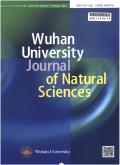HPLC-PDA法同时测定吲达帕胺缓释片中杂质
Q3 Multidisciplinary
引用次数: 0
摘要
采用光电二极管阵列检测器(HPLC-PDA)单次高效液相色谱法同时测定仿制药吲达帕胺缓释片中吲达帕胺及相关杂质的含量,进行质量控制。结果表明,该方法具有良好的选择性,并通过线性、检出限、定量限、回收率和精密度进行了验证。茚达帕胺、2-甲基-1-亚硝基-2,3-二氢- 1h -吲哚(杂质A, ImA)、4-氯-n -(2-甲基- 1h -吲哚-1-酰基)-3-磺胺基苯酰胺(杂质B, ImB)和4-氯-3-磺胺基苯甲酸(杂质1,Im1)的线性范围分别为0.028 ~ 1.80 μg/mL (R=0.999 95)、0.060 ~ 1.20 μg/mL (R=0.999 6)、0.032 ~ 1.20 μg/mL (R=0.999 85)和0.060 ~ 1.20 μg/mL (R=0.999 7),检出限分别为0.0093、0.012、0.012和0.006 μg/mL。在仿制药中未检测到ImA和Im1。吲达帕胺含量为标记量的96.7%,相对标准偏差(RSD)为1.30%;吲达帕胺相对于标记量的ImB含量为0.106%,RSD为1.82%。其他未明确杂质含量均符合质量标准。结果可为非专利吲达帕胺缓释片的质量控制和质量标准研究提供参考。本文章由计算机程序翻译,如有差异,请以英文原文为准。
Simultaneous Analysis of Indapamide and Related Impurities in Sustained-Release Tablets by a Single-Run HPLC-PDA Method
The contents of indapamide and related impurities in generic indapamide sustained-release tablets were simultaneously detected by a single-run high performance liquid chromatography equipped with photodiode array detector (HPLC-PDA) method for the quality control in this paper. The results showed the method had a good selectivity and was validated through linearity, limits of detection and quantification, recovery, and precision. The linear ranges of indapamide, 2-methyl-1-nitroso-2,3-dihydro-1H-indole (impurity A, ImA), 4-chloro-N-(2-methyl-1H-indol-1-yl)-3-sulphamoyl-benzamide (impurity B, ImB) and 4-chloro-3-sulfamoylbenzoic acid (impurity 1, Im1) were 0.028-1.80 μg/mL (R=0.999 95), 0.060-1.20 μg/mL (R=0.999 6), 0.032 4-1.20 μg/mL (R=0.999 85) and 0.060-1.20 μg/mL (R=0.999 7) with detection limits of 0.009 3, 0.012, 0.012 and 0.006 μg/mL, respectively. ImA and Im1 were not detectable in the generic drug. The content of indapamide was 96.7% of the labeled amount with a relative standard deviation (RSD) of 1.30%, and the percentage of ImB relative to the labeled amounts of indapamide was 0.106% with an RSD of 1.82%. The content of other unspecified impurities all met the reference quality standards. The results provided references for the quality control and the quality standard study of generic indapamide sustained-release tablets.
求助全文
通过发布文献求助,成功后即可免费获取论文全文。
去求助
来源期刊

Wuhan University Journal of Natural Sciences
Multidisciplinary-Multidisciplinary
CiteScore
0.40
自引率
0.00%
发文量
2485
期刊介绍:
Wuhan University Journal of Natural Sciences aims to promote rapid communication and exchange between the World and Wuhan University, as well as other Chinese universities and academic institutions. It mainly reflects the latest advances being made in many disciplines of scientific research in Chinese universities and academic institutions. The journal also publishes papers presented at conferences in China and abroad. The multi-disciplinary nature of Wuhan University Journal of Natural Sciences is apparent in the wide range of articles from leading Chinese scholars. This journal also aims to introduce Chinese academic achievements to the world community, by demonstrating the significance of Chinese scientific investigations.
 求助内容:
求助内容: 应助结果提醒方式:
应助结果提醒方式:


